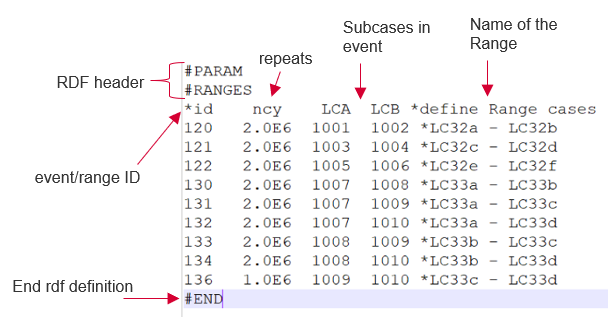Create Events with Fixed Points
Forego adding loads and create events that use a fixed number of time points.
-
Click the Load Map tool.
Figure 1. 
The Load Map dialog opens. -
Select Fixed Points from the Load Type drop-down menu in
the top-left of the dialog.
Note: Plots or channels are not required.
-
Click
 in the bottom
half of the dialog to create events manually or automatically.
in the bottom
half of the dialog to create events manually or automatically.
Option Description Manual Event Creation When Manual is selected and you click  , an event is created with no subcase
assigned.
, an event is created with no subcase
assigned.You can drag-and-drop single or multiple subcases under an event.
Figure 2. 
Auto Event Creation When Auto and Single Event are selected, select one of more subcases before clicking  . Only one event is
created.
. Only one event is
created.Figure 3. 
When Auto and Multi Events are selected, select multiple subcases before clicking
 .
.Figure 4. 
- Drag-and-drop subcases onto the events.
- Optional: Edit the scale values for the loads.
-
Adjust the number of cycles per event by changing the Repeats value.
For all specifications, repeats are considered as the required number of cycles (Nreq).Tip: Apply a Scale or Repeats value to all the events/subcases by right-clicking on a value and selecting Apply value to all events.
- Subcases placed under each fixed points event are compared to pick a max and min point which will constitute the fixed stress range.
- For the Eurocode 3 specification, multiple events created are passed as separate
ranges to create cumulative damage.
Cumulative Damage = Damage from Event 1 + damage from Event 2 + … damage from Event n.
Import and Export Range Definition Files
Range definition files (*.rdf) help create fixed range events automatically.
Note: Range definition files only work in combination with load combination files
(LCF).
The LCF is used to create the derived loadcases, which are then used to define fixed ranges via the RDF.
-
Click the Load Map tool.
Figure 5. 
The Load Map dialog opens. - Select Fixed Points from the Load Type drop-down menu in the top-left of the dialog.
-
Use the
 and
and  icons on the bottom-half of the dialog to import or
export an *.rdf file containing defined events.
icons on the bottom-half of the dialog to import or
export an *.rdf file containing defined events.
#PARAM and should contain the following data in the sequence
mentioned below:- A
#RANGEStag to indicate the start of the definition of the ranges. - Range detail with the id, lower limit, upper limit, and the range name, as shown in the example below.
